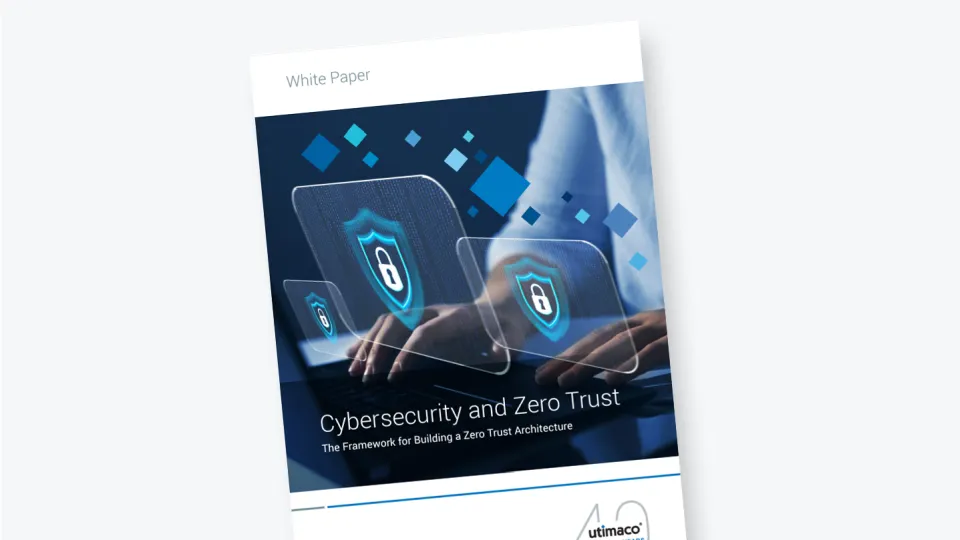El marco para construir una arquitectura Zero Trust
Este White Paper ofrece una visión en profundidad de la importancia de seguir un enfoque Zero Trust, un requisito fundamental para construir la infraestructura de seguridad informática de cualquier organización.
Eche un vistazo más de cerca a:
Los principios básicos de seguridad de Zero Trust: Información en profundidad sobre el qué, el cómo y el por qué es esencial una arquitectura Zero Trust, empezando por la construcción de una base sólida y la adhesión a determinados principios y medidas de seguridad
Empezar a crear una arquitectura Zero Trust. ¿Por dónde empezar? Aquí encontrará información sobre los aspectos básicos y las ventajas de considerar un enfoque Zero Trust.
Gestión de identidades: el núcleo del modelo Zero Trust. ¿Cuál es el papel de la gestión de identidades en Zero Trust y por qué los humanos son la categoría de identidad más débil?
Autenticación en Zero Trust: Por qué la autenticación es un reto crítico y qué herramientas se necesitan. Más información sobre cómo autenticar a los usuarios adecuados y autorizar los permisos de acceso apropiados
Cifrado de datos y gestión de accesos para minimizar el impacto de los ataques.
El papel de la criptografía en Zero Trust: Por qué la criptografía desempeña un papel importante en la ciberseguridad. Cómo la criptografía se encuentra en el núcleo de los productos, tecnologías y servicios modernos, y cómo proporciona un mecanismo para la autenticación fuerte y el cifrado de datos.
La importancia de las claves criptográficas y cómo la generación, gestión y almacenamiento de claves son requisitos críticos.
Obtenga más información sobre las soluciones de Utimaco para implementar una verdadera arquitectura Zero Trust y cómo los módulos de seguridad de hardware (HSM) le proporcionan las herramientas para construir una arquitectura Zero Trust.
General Purpose Hardware Security Modules as Root of Trust for Zero Trust Architecture
Strong security at each layer of an organization’s IT infrastructure is of importance to avoid threats and attacks at every possible entry point. A Zero Trust Architecture (ZTA) framework addresses this exact requirement and is a key enabler for mitigating the risk of unauthorized access.
Throughout all use cases in each industry, the number of connected identities, devices, applications, software, and data is expanding. This provides huge advantages for remote access and management, yet it also increases the likelihood of both internal and external threats.
In comparison to other security approaches, ZTA eliminates implicit trust as it is not built upon implied trust zones. It is based on the general principle of “never trust, always verify” and requires continuous validation of every stage of a digital transaction.
A properly built ZTA requires that all and any users, devices, and applications, as well as any additional infrastructure components both inside and outside of an organization's network, to continuously be authenticated, authorized, and validated before accessing systems and data. The secure generation and storage of cryptographic keys with a Hardware Security Module (HSM) is the starting point for each reliable ZTA.
Using Hardware Security Modules as the central Root of Trust for your Zero Trust Architecture
Cryptographic keys are needed to secure all actions to protect digital data, information, and processes, such as file encryption or identity and access management. Hence, reliable, and secure generation and storage of these keys should be the foundation for the complete security of any digital environment.
General Purpose HSMs provide secure generation, storage, and usage of cryptographic keys to protect those keys against loss, disclosure, manipulation, and misuse.
Hardware Security Modules enable total security for Zero Trust Architectures
Based on their core capabilities, which are secure generation, processing, and storage of cryptographic keys, HSMs provide many advantages in comparison to other key generation and storage methods including:
- Generation of high-quality keys by using strong cryptographic algorithms and randomization
- High logical security for key access, for example by m out of n authentication mechanisms
- High physical security since the HSM is fixed-installed in a rack, and specific HSM models can also detect physical attempts to be broken
- HSMs are the most proven and secure method for cryptographic use cases and are available from a wide range of performance and certification variants, ensuring that they meet an organization’s specific requirements.
Download our white paper about "Cybersecurity and Zero Trust" below and find out more about how to build and secure your individual Zero Trust Architecture.







